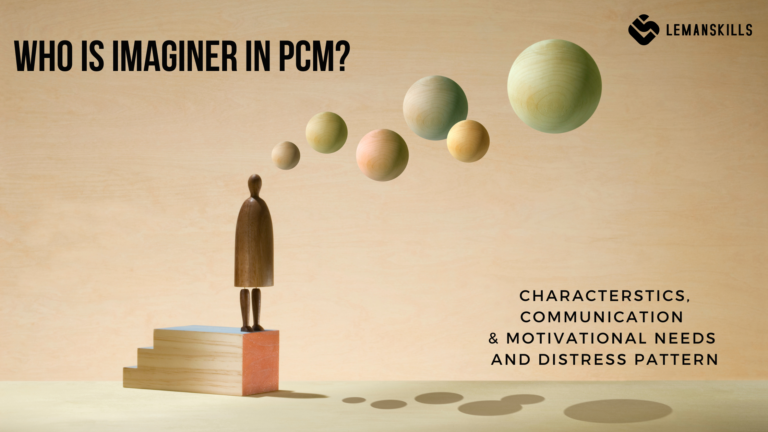In workspace-related sources of knowledge (this page included), we can find a lot of information about goals, efficiency, skills, leadership, change, habits and many more. Not so often the subject of emotions appears. As business world was growing in the past, the more popular were the statements like: “business is business, no emotions”, “you need to be tough if you want to achieve anything” or “suck it up, don’t show that you are weak”.
And by “being tough” or “being weak” many people describe not being emotional. Don’t feel, only use your brain. Think cold, make quick, accurate decisions based on data. That’s what looked like the biggest advantage of a successful business person.
But we learn. The world evolves, it changes all the time: we want it or not. We observe how people, businesses, societies and countries are transforming, how diverse the companies are, how often we talk about building inclusive environments: at work, at home and in many other places. And when I observe how competencies’ models, leadership styles and organizational cultures change, it appears that emotions are an uncovered element that influences employees’ engagement, level of burnout and countless more aspects of being satisfied, happy and healthy.
Regarding Transactional Analysis, we have 4 basic, main emotions: fear, anger, sadness and happiness. The whole palette of emotions that are more descriptive, detailed are derivatives of those 4, but at the end of the day, naming those 4 is the key. A key to understand what we feel, how we act, react, communicate, make decisions or what convictions are perpetuate in our heads. Because an emotion is always a reaction on a certain stimuli, making us experience either stress or pleasure and then through thoughts taking us to the path of a certain feeling.
Is 4 enough to really describe what is going on inside of ourselves? When we know that a certain emotion appears? And how to take care of each of them to react adequately, to not start psychological games, to stay out of the drama triangle? Let’s take a look.
Emotion no. 1: fear
The base of fear is an external or internal stimuli that leads to feeling stress. And after the stress comes, the thought that appears in our brain is to be somehow in danger: that’s when the biological fight or flight response starts to work. And the natural, basic feeling in that situation is fear. Fear that we are going to be hurt, maybe by losing something or someone that is important to us.

On a body level we have shaky hands, tension on the face (around eyes and mouth), as well as in the core body, then legs. We can have flushes on the face, sweaty hands (and sweaty body in overall), dry mouth, stomach issues, shaky legs. On a perception level we can have empty head, vision or hearing disorders.
In this situation our instinct tells us to run away, to be as far from this whole thing as possible. And from the rational perspective we know that it’s not the smartest strategy in a long run. What is a real need (named as a social need as well) is to get some help/support or to get calm. It will allow our brain and body to get the balance back and think about constructive solutions. What could be helpful as well is an internal strategy to accept our own limits, in overall or in a certain case, depends on the situation.
Emotion no. 2: anger
The anger’s root cause is also a stimuli that created a stress. The difference between fear and anger is that after the stress appears, instead of a thought of danger, a though of harm. Maybe somebody violated our boundaries or a contract, and it makes us angry. The instinct of the reptilian part of our brain uses the second part of a fight or flight response: it fights. It attacks their own body, other people (even if they have nothing to do with a certain situation), the company we work in or the whole world. On a body level we start to feel rage in our stomach as in the fear scenario, but it is more like “cooking” feeling, that we feel like we are about to explode from the inside.

The effective way of dealing with that feeling will be to change something, and on an internal level to accept the limits of other people. Nobody is perfect, we all have some flaws that for some people aren’t even noticeable, and for some they look like huge monsters that stop us from living our full potential.
Anger can eat us alive, is one of the strongest emotion that influences our judgement, decision making process and can have a huge impact on relationships that we are a part of. Not only with our significant other, but also at work: with our colleagues, managers, clients or other teams that we cooperate with on a daily basis. Be mindful of it, it can save you a lot of time, money and health issues.
Emotion no. 3: sadness
Sadness is the third basic emotion that comes from the stress after a certain stimuli works. In this case, on the thought level what we can get is a loss. The thought that something or someone was taken from us, which can make us feel not important, somehow diminished. On a body level we fell tightness in the chest and/or something like a lump in the throat. We cry.

What we usually do instinctively is to use the third reaction that comes from the reptilian part of our brain: we freeze. We close up, taking a step back, sometimes it’s really hard to get closer to us. This is the way that we want to protect ourselves, to not feel any more loss. What we really need is to get some comfort from other person. Sometimes it’s enough that somebody just is there for us. From the internal, smart perspective, we can really use the acceptance of the limits of human form.
Emotion no. 4: happiness
It’s interesting how we have 4 basic emotions, but only one of them is positive.
The base of happiness is an external or internal stimuli that brings us pleasure. Pleasure leads to the thoughts around satisfaction and it creates a feeling of happiness. On a body level we have an automatic smile on our face, we fell the dizziness in our heads and a warm feeling in our stomach.

In this situation our instinct tells us to get into the experience more deeply, to engage and share this feeling with others. And we need a social context for sharing, to get more of it and give it to people so they can experience what we do at the moment. The smart thing to do here is to accept all of the good that is around us and stop the though in our heads that often shouts: “IMPOSTER”. In the world of so many bad events, changes, disappointments and cruelty, we can use more hope, using positive energy and momentum, so we can live better lives.
The bottom line
The bottom line is that we always try to do our best to name adequately the basic emotion we feel as a reaction to a certain stimuli: fear, anger, sadness or happiness. Listen to your body: recognizing the reaction of the body that I gave you in this article is the best and the fastest way to map our state. When we name it correctly, we can choose a proper strategy, adequate to what we really need at the moment.
Are 4 emotions enough to describe us? Of course not, we are very complex species. But, as mentioned at the very beginning of this article: those 4 are basic emotions and every other one is a derivative of them. Start with being really good with this shortlist, and then you can move on to more complicated structures.
If you cry and say that you are angry: it’s not true. This reaction applies to the sadness as it is connected with the thought about losing something. Most of us were never taught about how to name and react well on an emotional level. So we learn it today, to be better, to live healthier lives with an acceptance for the emotions, but also an awareness of what’s really happening in ourselves.
Let’s use it wisely.




